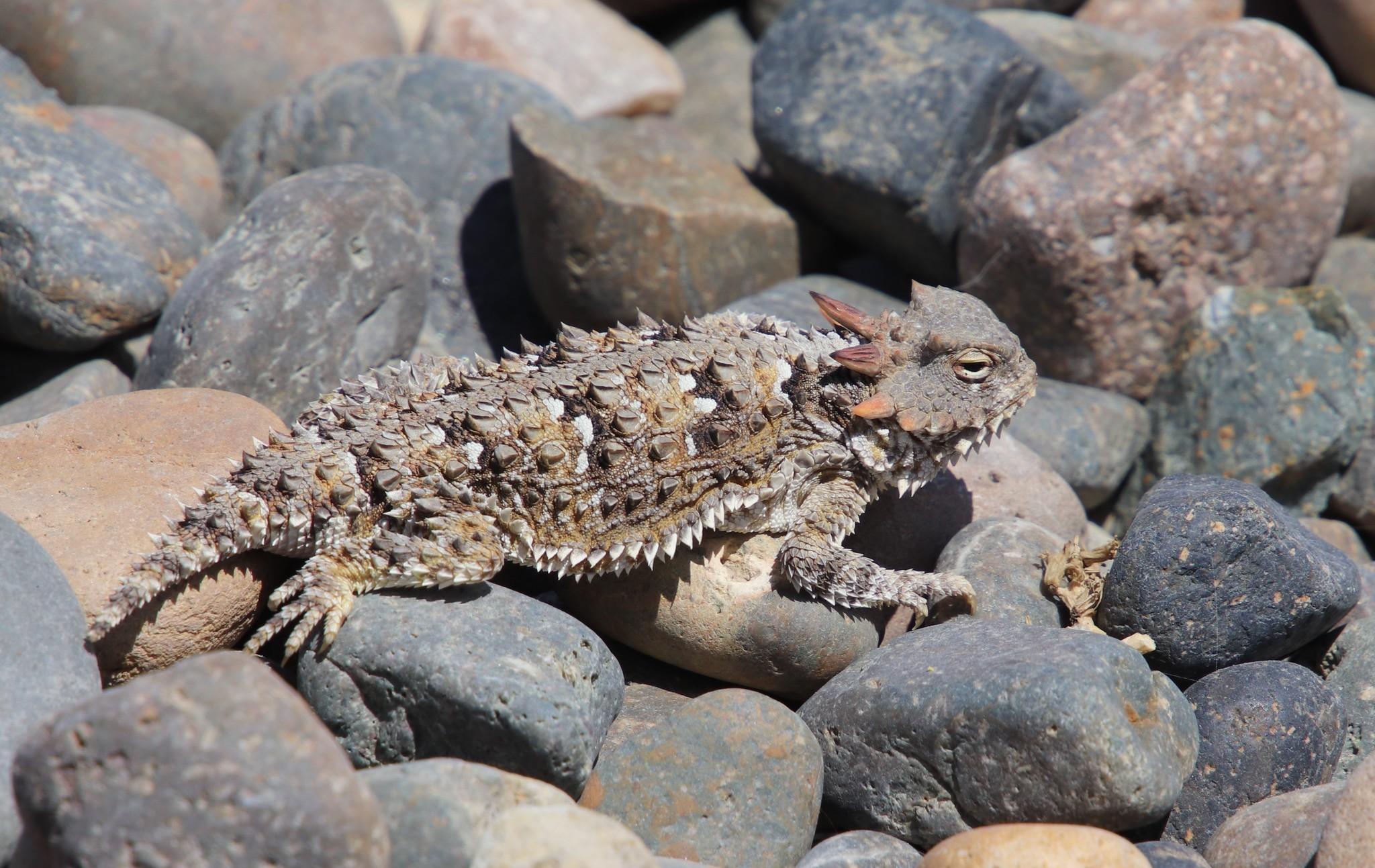
Species Spotlight: Coast Horned Lizard (Phrynosoma blainvillii)
The coast horned lizard (Phrynosoma blainvillii) is a State-listed Species of Special Concern and a Covered Species under the Southern Subregion Habitat Conservation Plan (HCP). They are found in California, along the Pacific coast from the Baja California border west of the deserts and the Sierra Nevada, north to the Bay Area, and inland as far north as Shasta Reservoir. This small, spiny lizard ranges from 2.5 – 4.5 inches in length and is named for the large crown of horns or spines displayed on its head, with the two center horns being the longest. Coast horned lizards have a flat, oval-shaped body that is colored reddish, brown, yellow, or gray, with dark blotches on the back and large dark spots on the sides of the neck to camouflage into surrounding rocks and soil. The belly is covered with smooth scales that are cream, beige, or yellow, usually with dark spots.
The species inhabits open areas with loose, sandy soil and low-growing vegetation in valleys, foothills, and semi-arid mountains and can often be found in lowlands along sandy washes with scattered shrubs and along dirt roads. Habitats for this species include alluvial fan sage scrub, coastal sage scrub, chaparral, open grasslands, and open woodlands. Coast horned lizards are diurnal and active during periods of warm weather, retreating underground and becoming inactive during extended periods of low temperatures or extreme heat. Females lay 6-21 eggs from May to June and may sometimes lay two clutches of eggs in a year. Eggs will hatch after two months, usually between August and September, and the young reach maturity after about two years.
Coast horned lizards eat mainly ants, especially harvester ants, but they will also consume other small invertebrates such as spiders, beetles, termites, flies, honeybees, moth larvae, and grasshoppers. When threatened, coast horned lizards will typically run away quickly to hide under a low bush or flatten their body to prevent shadows and remain motionless relying on its camouflage to blend into the landscape and avoid detection. The species can also inflate themselves with air to appear larger and as a last resort, they will squirt blood from the corners of its eyes to startle or repel predators such as coyotes, foxes, and birds.
As part of the HCP Management & Monitoring Program, the Rancho Mission Viejo Land Trust has been conducting annual surveys to monitor the extent and general health of existing populations, identify potential stressors (e.g., urban-related predators, roads, human harassment), and implement appropriate management actions to enhance and maintain suitable habitat for the Coast horned lizard. Ongoing management activities include control of non-native species such as the Argentine ant, domestic animal control, management of fire and grazing, and monitoring for illegal trespass and collection. Ultimately, a total of 23,122 acres of suitable habitat for the Coast horned lizard would be conserved and managed in perpetuity within The Nature Reserve at Rancho Mission Viejo.
Photo credit: Millie Basden
